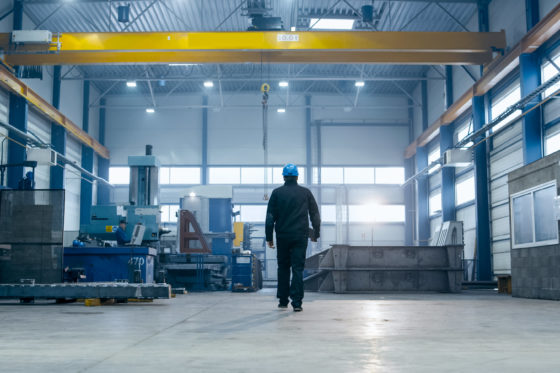Close to 1,000 manufacturing workers suffer injuries from slips, trips, and falls each year in B.C. What can employers and workers do to prevent this?

Photo credit: iStock.com/gorodenkoff
This is the first post in a two-part look at slips, trips, and falls. Stay tuned for next week’s post on new technologies in slip-resistant mats.
What comes to mind when you think about safety issues in the manufacturing industry? Heavy-duty machinery, mobile equipment, and hazardous materials are likely at the top of your list. But one safety issue many people don’t think about is the risk of slips, trips, and falls.
Each year in B.C., close to a thousand manufacturing workers sustain injuries from falls, which are often the result of slipping or tripping. Injuries from falls can be serious.
Here are some examples from the WorkSafe bulletin Slips, trips, and falls in manufacturing, published in July 2019:
- A winery worker slipped on a wet staircase and fell to the ground. The resulting ankle fracture took almost a year to heal.
- A woodworking shop worker tripped on an extension cord and fell against the corner of a wooden cabinet on the floor, resulting in a head injury. The injury took almost a year to heal.
- A worker in a plastic processing plant tripped on a loose tie strap and fell. The resulting wrist fracture took 8 months to heal.
Most falls are on the same level
Jose Barranco, a WorkSafeBC industry specialist for manufacturing, says that when he and his team looked more closely at the fall incidents for 2017, they noted that the majority (62 percent) were falls on the same level.
Contrary to what people expect — that people will fall from a ladder or from a ledge — most falls are actually happening in situations where people are simply walking on a flat area or on stairs.
“These injuries are completely preventable,” says Jose. “There are lots of systems employers can implement relatively easily to prevent slips, trips, and falls in their workplaces.”
He adds that a good safety program is also good business, when you look at how much these injuries cost employers. On average, slip, trip, and fall injuries cost B.C. businesses 49,000 lost workdays and more than $22 million in claim costs each year.
The WorkSafe bulletin mentioned above offers practical tips for preventing these injuries. Here are a few (of many more) examples:
- Install electrical wires and cords where they will not cause tripping hazards
- Use slip-resistant mats and install handrails
- Keep work areas clutter-free
- Set standards for ensuring all spills are cleaned up promptly
Manufacturing employers can also display this new poster, Manufacturing safety: Preventing slips, trips, and falls. Available in several languages, the poster illustrates how to prevent these injuries in your workplace. It’s also a good resource for joint health and safety committee meetings.
For more information, see WorkSafeBC’s webpages on manufacturing and slips, trips, and falls.


